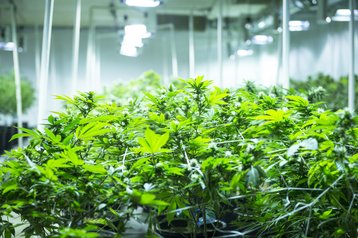We’ve been told that data center energy consumption in the US could soon be rivalled by facilities built for indoor cultivation of cannabis. That suggests a possibility for diversification - and at least one data center equipment vendor has already risen to the challenge.
Since it became legal to grow and sell cannabis in several US states, the industry has been expanding, and acquiring all the commerical trappings of big business. A recent DatacenterDynamics event in the US found itself in the same hotel as a cannabis investors’ convention - and, if we are honest, the pot investors looked more conservative and better behaved than the data center builders.
Energy intensive
They also have similar issues to deal with. Indoor growing rooms require a lot of energy, and precisely controlled temperature and humidity, within industrial buildings.
Figures for the environmental impact of indoor growing have been bandied around in a simliar way to those for data centers. A 2012 report by Evan Mills of Energy Associates examined the carbon footprint of cannabis at 4600kg of CO2 for every kilo of weed grown, and reckoned that if all illegal growing sites are included, the industry then made up around one percent of US electricity usage or around $6 billion. Four years on, that figure is still widely quoted, and a report from EQ Research came to our attention because it made the comparison with data centers, whose electricity usage is normally reckoned at two percent of the US grid.
There are ten states about to legalize cannabis and, as with data centers, there’s been a sudden realization that this is an energy intensive industry.
Once again, the figures used are not necessarily up-to-date or accurate. Many people quote a power density of 200W per square foot for growing weed indoors, but grow sites suggest that LED lighting only needs about 25W per sq ft.
As with data centers, there’s been a sudden realization that this is an energy intensive industry and a panic which may be based on inaccurate data.
But why are they growing indoors, instead of in the open air, using natural solar energy? That’s mostly down to the fragile legal status of marijuana. It’s legal for recreational use in four states and for medical use in 21, and the rules often stipulate that the plants should be grown indoors, with no windows, so there’s and no risk of neighbors being overpowered by the fragrance.
While cultivation is legal in certain states, it’s not allowed by federal law, and so growers won’t be able to sign up to any Federal energy saving programs.
Tech experts weigh in
Still, data center infrastructure specialists are ready to help. Stulz, well known for its data center products, has branched out into the medical cannabis industry. The company has produced air conditioning units specifically designed for steady temperature and humidity conditions, to prevent white mold and the formation of unwanted hermaphrodite plants, as detailed in a thorough promotional video (below).
And that’s not the only connection between data centers and dope. It’s been reported that Microsoft is eyeing the marijuana industry. And five years ago, ZDNet wrote about a data center which was a cover for an illegal growing operation. Sadly, that was an April Fool’s spoof, but a perceptive one: “Network operatives always act a bit stoned anyway, so they evaded suspicion for years.”
A version of this story appeared on Green Data Center News



